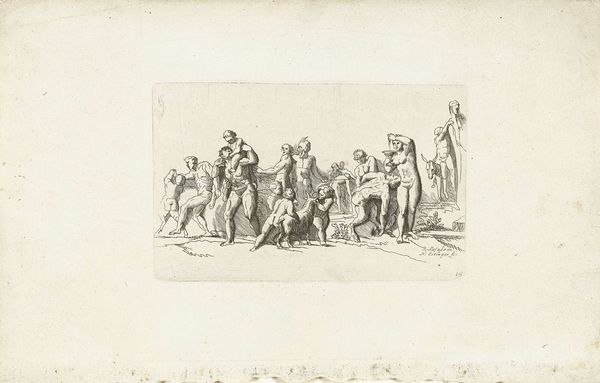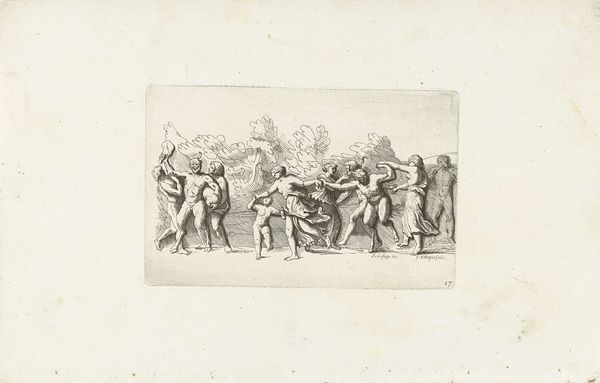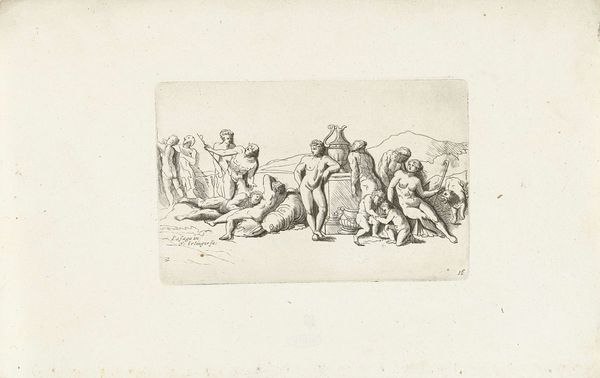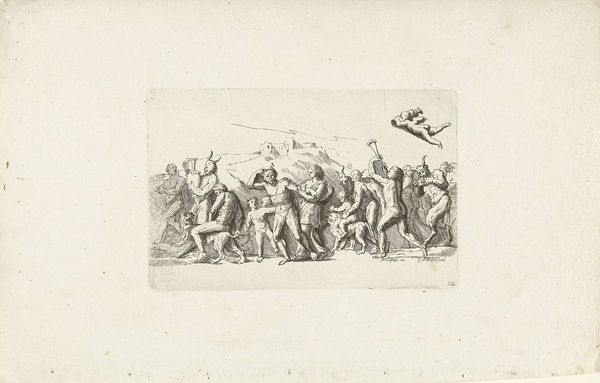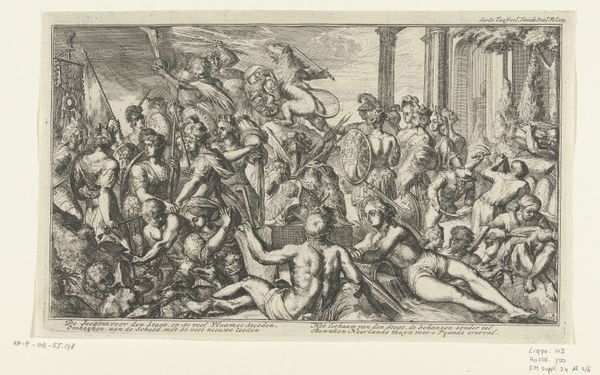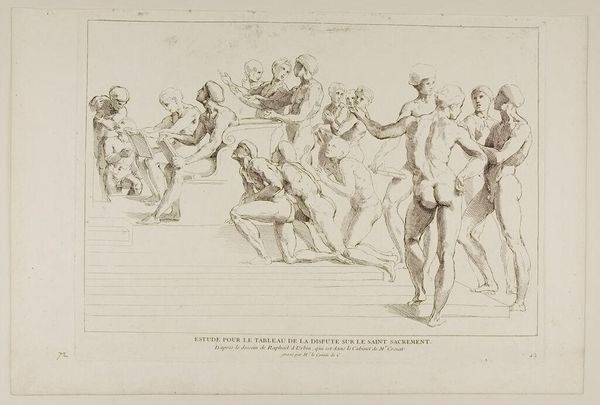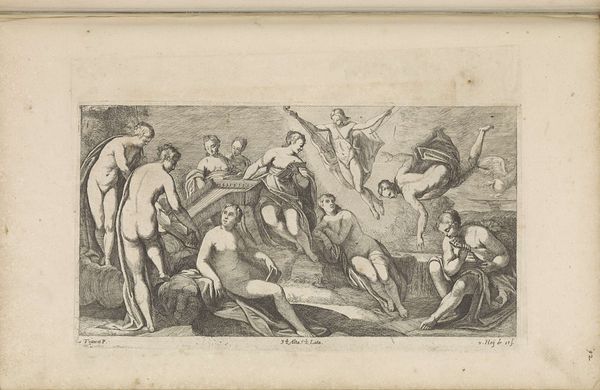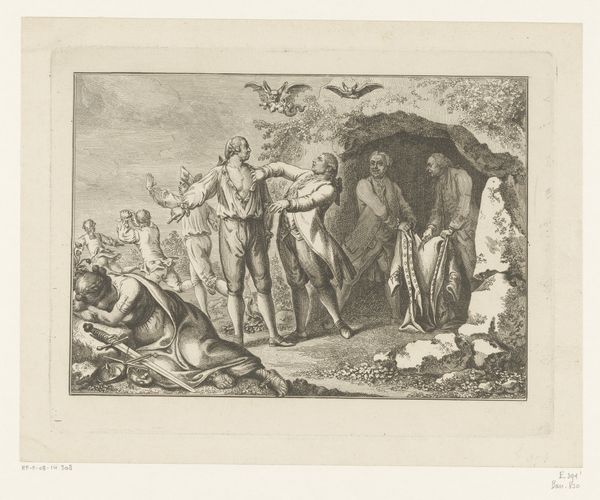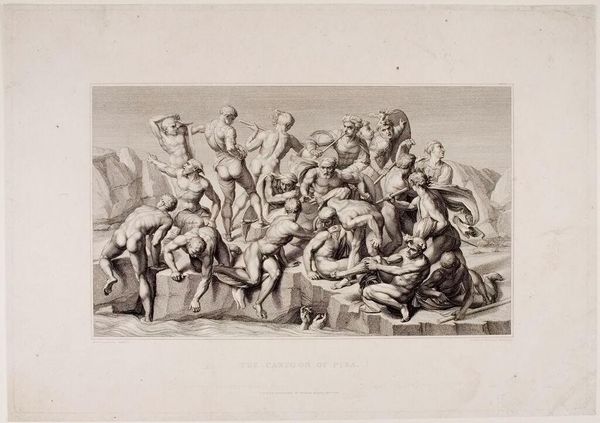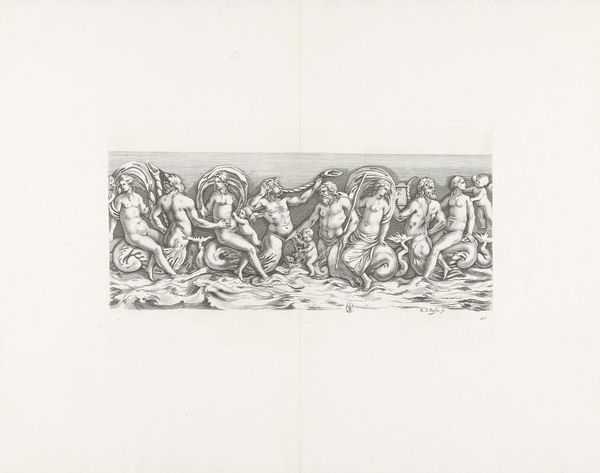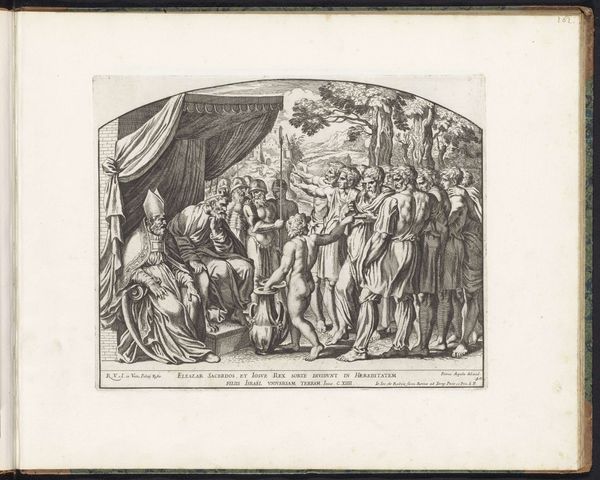
print, engraving
#
baroque
# print
#
old engraving style
#
figuration
#
genre-painting
#
history-painting
#
nude
#
engraving
Dimensions: height 103 mm, width 161 mm
Copyright: Rijks Museum: Open Domain
Curator: Let's take a look at this engraving, "Feestende bacchanten" or "Feasting Bacchantes" by Franz Ertinger. It was created sometime between 1652 and 1707 and is now held here at the Rijksmuseum. What strikes you about it? Editor: The frantic energy. All these nude figures, compressed together, the linear hatching practically vibrates. There’s a real sense of motion and even, dare I say, chaos. Curator: The scene depicts followers of Bacchus, the Roman god of wine, indulging in revelry. In Ertinger's time, such images of pagan myth provided an acceptable, even fashionable, outlet for exploring themes of ecstasy and abandon within a structured, often religiously constrained society. Editor: Note how the figures in the foreground – those wrestling – are rendered with a higher level of detail. It focuses our eye on that central drama, guiding us through the frenzy of the scene. There’s an implied depth too; notice how the figures in the background are fainter. Curator: This use of the Bacchic subject can be seen as more than a study of form or revelry. By associating with ancient freedom, figures like Ertinger indirectly critiqued contemporary constraints. Representations of these uninhibited gatherings reflected social tension. It hints at a desire for liberation within societal bounds, echoing concerns about the power of the church, politics, and expectations. Editor: It’s intriguing how the rigidity of the engraving process contrasts with the loose behavior on display. Each line is so precisely etched, yet they depict wild movement, drunken fights and sensual moments. Semiotics, as Barthes would see it. Order on the surface barely masks chaos underneath. Curator: Precisely. The engraving medium itself was also incredibly important. The reproduction of these prints allowed these messages—both artistic and cultural—to spread beyond the immediate circles of wealth and power that commissioned most paintings, engaging the middling sorts in cultural debates. Editor: Well, I see a captivating display of pictorial techniques in conveying dynamism from rigid lines and order. Curator: And I consider the enduring cultural undercurrents represented. The image, and its dissemination, became tools to negotiate one’s place in the complex tapestry of early modern society. A wild party it might seem, but it reveals order under surface if we ask more questions.
Comments
No comments
Be the first to comment and join the conversation on the ultimate creative platform.
